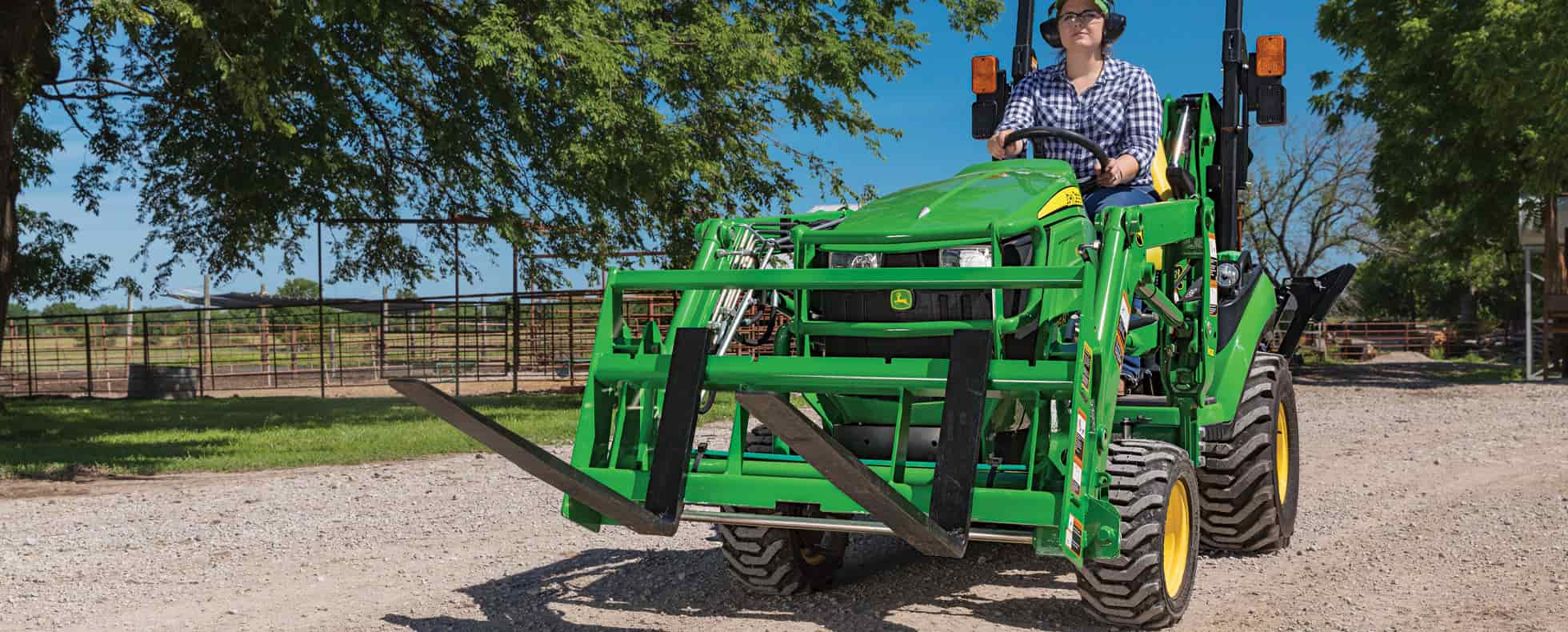While most people who are purchasing a track loader, wheel loader or tractor start with a bucket attachment, they usually find that a pallet fork should be their next purchase. Pallet forks have a wide range of uses for both construction and agriculture material handling, and the open-sided construction of the attachment will make it one of your most useful tools and a great investment for your work or property.
5 Common Uses for Quick-Attach Pallet Forks
- Hauling or moving logs or long lumber—Because the open-sided construction of pallet forks doesn’t hinder the length of your log or lumber, there are many uses when looking to haul out large logs, or longer lengths of lumber like you would use to frame a house or building.
- Moving or installing fence posts—For the same reasons as listed above, pallet forks are useful for hauling fence posts. If you have a tractor that allows you to attach a post hole digger on the back, then you can carry the materials and perform the task with the same equipment.
- Moving round hay bales—While it requires some ballasting and you need to have a large enough tractor, the pallet fork tines can get under a round hay bale to lift and move it wherever you need to store or distribute it.
- Storing hay—If you’re moving and storing hay bales and need to lift them where you need to store them, pallet forks are a great tool. Whether you are stacking them or storing them in a loft, the ability to lift heavy materials while keeping them level is exactly what a pallet fork is designed to do.
- Contractor and construction multi-tool—The construction industry utilizes pallet forks to move any packed building supplies such as roofing material, lumber, siding, fencing, blocks and bricks around and between jobsites.
Pallet forks are considered straightforward and easy to use, but there are a few safety tips, best practices and things to keep in mind.
Top 5 Safety and How to Use Tips for Pallet Forks
- Gravity matters – Always work to keep forks low to the ground when transporting for better visibility and a lower center of gravity.
- When carrying a load, make sure that you are using the whole pallet fork. Make sure the load is balanced to the back of the fork and not just the end of the tines or on one tine. The same goes for making sure that the weight load isn’t carried too far out beyond the end of your fork. This can cause tipping or damage to the fork tines.
- Understand any ballasting that might be needed and check tire pressure to make sure that you have enough weight on the back of your equipment to balance the load capacity you are hauling. Always respect the weight limits and any land grade that you might encounter when hauling a load. Don’t be in a hurry. Remember that two or three small trips are a lot safer than one large one.
- Ensure positive latching of forks and grapple onto the fork frame, and also ensure the fork frame’s quick-attach is firmly attached onto your equipment.
- Never use fork tines to grab rocks, stumps or roots and do not use pallet forks to dig trenches or holes. There are much more effective and safer attachments for these purposes.
When working with a pallet fork, as with any attachment, always read the operator’s manuals for the equipment and the pallet forks and perform whatever maintenance the manual recommends. For pallet forks, maintenance includes, but is not limited to, checking that all fasteners are secured, a pre-use damage inspection to check for damage, worn parts or cracked welds, replacing damaged safety signs, and, if a hydraulic grapple is included, checking the hydraulic componentry for leaks or wear.
Whether you are hauling bricks at a work site, lumber to frame a home, or hay bales into your barn, a pallet fork can help you make quick work of most hauling tasks and is a great investment for your skid steer, loader, compact excavator or tractor.
To find pallet forks, agriculture attachments for your skid steer or loader, or attachments for your compact tractor visit your nearest RDO Equipment Co. location and speak with an account manager.
